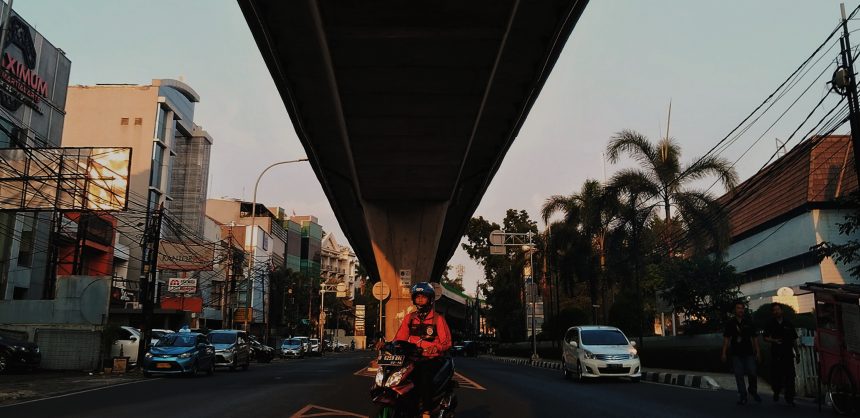
SADDAM by lingkaran: Mobile Photography – more than just a selfie
Anyone can pick up a mobile phone and take a photo, but it takes a more skilled photographer to create a truly great image. It’s long been said that the best camera is the one you have with you. One scroll through your Instagram feed and you may look twice, wowed by the quality of photos coming from the phone. Taking incredible photos with your phone is actually very easy, as long as you follow some important guidelines.
The #1 rule in photography is 10% gear / 90% knowledge. So if you know HOW to be a great photographer and know what to look for, you will be able to take amazing pictures with almost anything. In this article, you’ll take a journey to become a better mobile photographer, from MOBILE, NARRATE, GUIDE, CAPTURE, and EDIT.
—
Why mobile photography? Simply, because it’s un-intimidating, lightweight / portable, ease of use, easy panorama, easy editing, and immediate images. You have everything within you, you have your hand, your eye, and your story. Start with why. Ask this question in the first place, “What is my purpose in taking this photo?”, “What am I trying to say?”, “How can I tell that story in the most effective way?”
Now, let’s get started with everything you need to know for taking amazing photos with your mobile phone!
Your phone spends a lot of time in your pocket, a bag or in your hand, and as a result it will get dirty. Dirt, dust, grease and fingerprints on your lens will have a big effect on the quality of your photos. There’s no point trying to take great photos if the glass of the lens is dirty. It will block light from entering the camera’s sensor and will leave smudges, blurs or dust spots on your images. A clean lens will ensure you get sharp, clear images with your phone.
The mobile phone has a zoom function which you can access by pinching or stretching two fingers on the screen. This brings up a zoom slider which you can slide with your finger to zoom in and get a closer view of your subject. Unfortunately this is a digital zoom and not an optical zoom. In essence what happens with a digital zoom is that the image is cropped as you zoom in. This results in a noticeable loss in image quality the more you zoom in. If you want to take a photo of a far away subject, don’t use the zoom. Walk closer instead and use the camera as normal without any zoom. You’ll end up with a far better quality shot.
The most important thing to look out for when taking a photo is to make sure that your subject is in sharp focus. To set the focus on your mobile camera you simply tap the screen where your subject is in the frame. A small square will appear to confirm the focus point. If your subject is moving around, make sure you tap the screen just before you take the shot to ensure that they are in focus.
When you tap on the subject to focus on them, the camera will also use the focus point to set the exposure in the shot. Exposure simply refers to how bright or dark the image is. Allowing the camera to set exposure on the focus point isn’t always ideal. For example, if the subject is in a dark area of the frame, this could lead to the overall image being over-exposed (too bright) or vice versa.
Getting focus and exposure right is crucial in photography, but composition is equally important. Without good composition, your photo isn’t likely to be very eye-catching. The rule of thirds is one of the most useful composition techniques in photography. It’s an important concept to learn as it can be used in all types of photography to produce images which are more engaging and better balanced. The rule of thirds involves mentally dividing up your image using two horizontal lines and two vertical lines. You then position the important elements in your scene along those lines, or at the points where they meet.
If you see something that catches your eye don’t just take one shot and hope for the best. The chances of getting a good photo with your first shot are very slim. You should take shots from various angles and distances. Keep reviewing your photos as you go to get an idea of what is and what isn’t working. If you find an angle or point of view you like then take multiple shots from that position. This helps ensure that you get a well composed shot that is in sharp focus. The beauty of digital photography is that you can delete all the photos that didn’t work… and there will be a lot that don’t work! Also don’t be afraid to take bad shots. No one will ever see them.
As photographers, the choice is up to us to determine what kind of light to use in our work. Light is the essence of photography, it can be thought of as “painting with light”. There are many different types of light, and this makes a huge difference to how your photos will turn out. Harsh light has a hard edge between the light and the shadow, while a soft light has a smoother transition. The broader the light source, the softer the light. The narrower the source, the harder the light. A broad light source lessens shadows, reduces contrast, suppresses texture. The closer the light source, the softer the light. The farther the source, the harder the light. This stands to reason: Move a light closer, and you make it bigger—that is, broader—in relation to your subject. Move it farther away, and you make it relatively smaller, and therefore more narrow.
Photographer Henri Cartier-Bresson, the pioneer of modern photojournalism, was the master of timing. He coined the term decisive moment, to describe that moment at which the photo is ‘most significant’.
“I see timing as the point when your composition, exposure, lighting and subject, all intersect in perfect unison. Photographically, timing is important for everything from facial expressions to sunsets.”
You can anticipate perfect timing, or create it. Train your eye to recognize timing. Look at things in your everyday life and think of when the best time to press your camera button would be. This will train your eye and your brain to anticipate decisive moments as they happen and give you ideas on how to create them yourself.
Our world is filled with patterns and colors. They’re everywhere when you start looking for them and they can be a powerful element to think about when out and about with your camera. Rather than “transcribing” a scene in front of you into picture form, those patterns and colors might bring something fresh and interesting to your result. Look for patterns in your environment. Sometimes they are obviously designed – like the weave of a carpet or checker box of a shirt. But the even more interesting ones are discovered: similar patterns and colors from two different objects, the consistency of a boat dock viewed from above, the uniformity of the street lights, the layout of the cobblestone. Discovering patterns and colors is a great game to play by yourself as you walk about your day. See how you can capture them with your mobile phone in a way that surprises and delights your audience.
You should always look at alternative points of view when taking your photos at any location. Most beginners will take shots from a standing position, but the beauty of the mobile phone is that it’s so small and light it can be used in places that a bigger camera wouldn’t work. You should consider getting down low and shooting from ground level. This technique is great for creating a unique view of your scene that people normally wouldn’t see from standing height. You could also try shooting from high up to get a bird’s eye view of your subject.
For more details about the step by step guidline, here take a look on the slide below.
[slideshare id=82964166&doc=mobilephotographyblog-171129101430]












